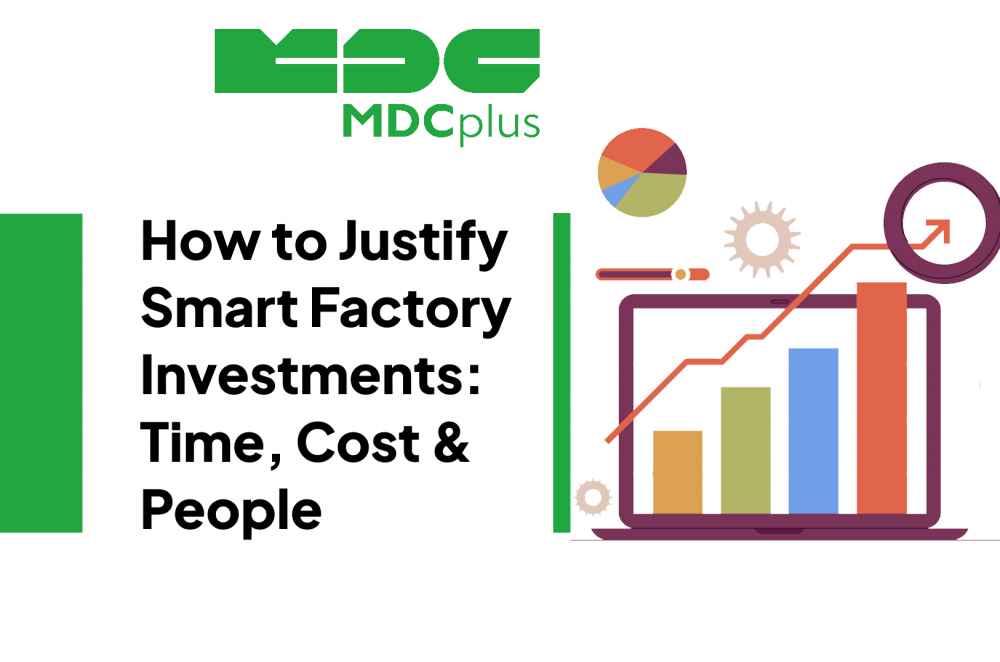How to Justify Smart Factory Investments - Time, Cost, and People
Digital transformation in production is rarely about technology itself. It’s about proof — proof that every dollar, hour, and operator involved brings measurable return.
The Real Question: Is It Worth It?
Every factory now faces the same tension. On one side — constant pressure to modernize. On the other — fatigue from past “digital” projects that promised more than they delivered. Executives don’t ask whether digital transformation works in theory. They ask: Does it pay back fast enough? Can we prove it without another two-year rollout? Justifying investment in modern machine monitoring, MES, or analytics starts with quantifying what the factory already loses — not what software costs.
From Visibility to Value
Smart factory ROI starts where visibility begins. When downtime, setup losses, or minor stops go unmeasured, every improvement plan runs on assumptions. A machine monitoring system replaces assumptions with data, and data with savings.
The payback model is simple:
- Baseline the current state. Track true availability and OEE for one pilot line.
- Quantify recovered hours. If real-time monitoring exposes 10% hidden downtime, that’s 10% of asset value reclaimed — not purchased.
- Translate efficiency to money. Multiply recovered hours by machine-hour rate, then by days per year. The number usually surprises leadership.
In most cases, the system pays for itself within six to nine months. Not through new revenue, but through prevented loss.
Implementation vs. Return
Executives worry less about software price than about time lost to implementation. Every hour engineers spend configuring dashboards is an hour not spent improving throughput.
The counterargument is direct: modern systems are not IT projects anymore — they’re plug-ins for operations. A line can start reporting within a week; a pilot can produce usable OEE data within a month. That time is not consumed; it’s converted. Manual data collection, spreadsheets, and shift summaries disappear. Operators stop logging stops by hand. Engineers stop merging Excel sheets. The factory earns back dozens of productive hours per week — measurable in both wages and output.
A good justification report doesn’t show “hours spent on deployment,” it shows “net hours regained.”
Operator Involvement as ROI
The toughest metric to quantify is human adoption — and yet it’s the most decisive. When people on the floor ignore new tools, even perfect dashboards stay empty. Justification here isn’t about compliance. It’s about trust. Operators log downtime when they see it leads to action. Supervisors review data when it reflects real conditions, not management theory. Engaged workers create cleaner data; cleaner data drives faster fixes. A 2-minute operator input may save a 2-hour production stop. That’s not overhead — that’s participation in profit recovery.
In boardroom terms, workforce involvement is the most undervalued KPI of digital success.
Turning Proof into Policy
For a C-level audience, “digital transformation” becomes real when the ROI story speaks the same language as the balance sheet:
- Investment justified by recovered capacity
- Time justified by operational agility
- People justified by engagement data
A smart factory project isn’t a cost center; it’s a performance audit with real-time feedback. When leadership sees the impact through numbers — not dashboards — digital stops being an experiment and becomes the new baseline of running a factory. Technology doesn’t justify itself — the results do. If you can measure downtime before it becomes loss, quantify improvement before it fades, and show operators how their input drives change, you’ve already justified the investment.
About MDCplus
Our key features are real-time machine monitoring for swift issue resolution, power consumption tracking to promote sustainability, computerized maintenance management to reduce downtime, and vibration diagnostics for predictive maintenance. MDCplus's solutions are tailored for diverse industries, including aerospace, automotive, precision machining, and heavy industry. By delivering actionable insights and fostering seamless integration, we empower manufacturers to boost Overall Equipment Effectiveness (OEE), reduce operational costs, and achieve sustainable growth along with future planning.
Ready to increase your OEE, get clearer vision of your shop floor, and predict sustainably?
